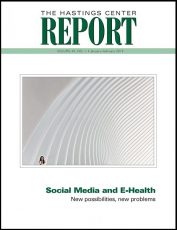Tom L Beauchamp

Extract
To bring out what I see as the most plausible interpretation of Kukla’s article, I recast her main point as follows (though I am not optimistic that she would accept this restatement): The received view in bioethics is commonly interpreted so that autonomy occurs exclusively through discrete informed consents to medical procedures. However, this vision of autonomy is too narrow. Autonomy is also expressed through stable, enduring, and committed acceptance of medical practices. Kukla rightly points out that this account must be rounded by a rich understanding of medical practices together with a model of the virtue of conscientiousness in upholding the practices, principles, regimes, and values adopted.
Beauchamp TL. (Correspondence) Conscientious Autonomy: What Patients Do vs. What Is Done to Them. Hastings Cent. Rep.. 2005;September-October):5-6.